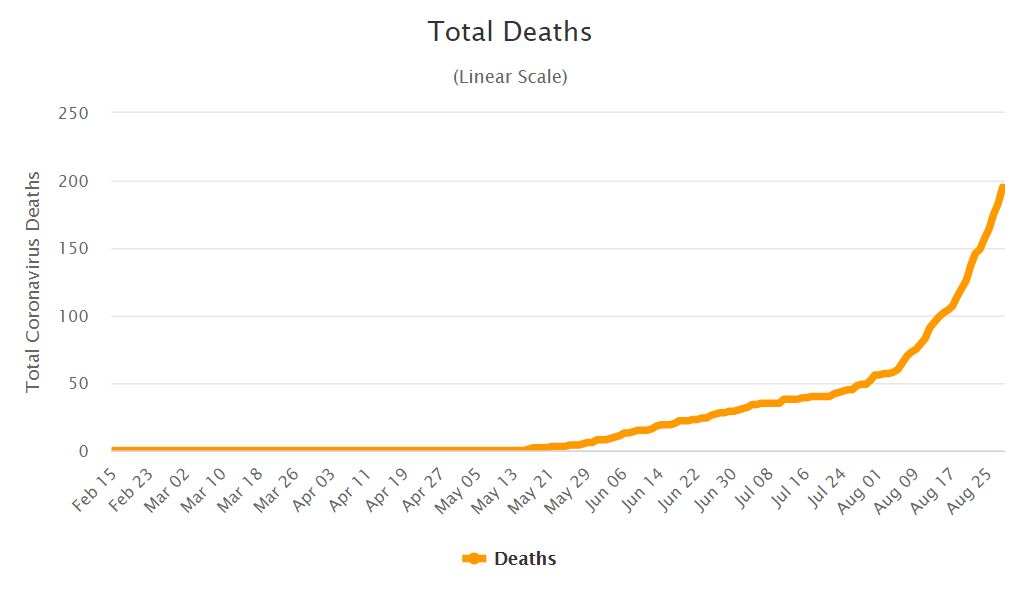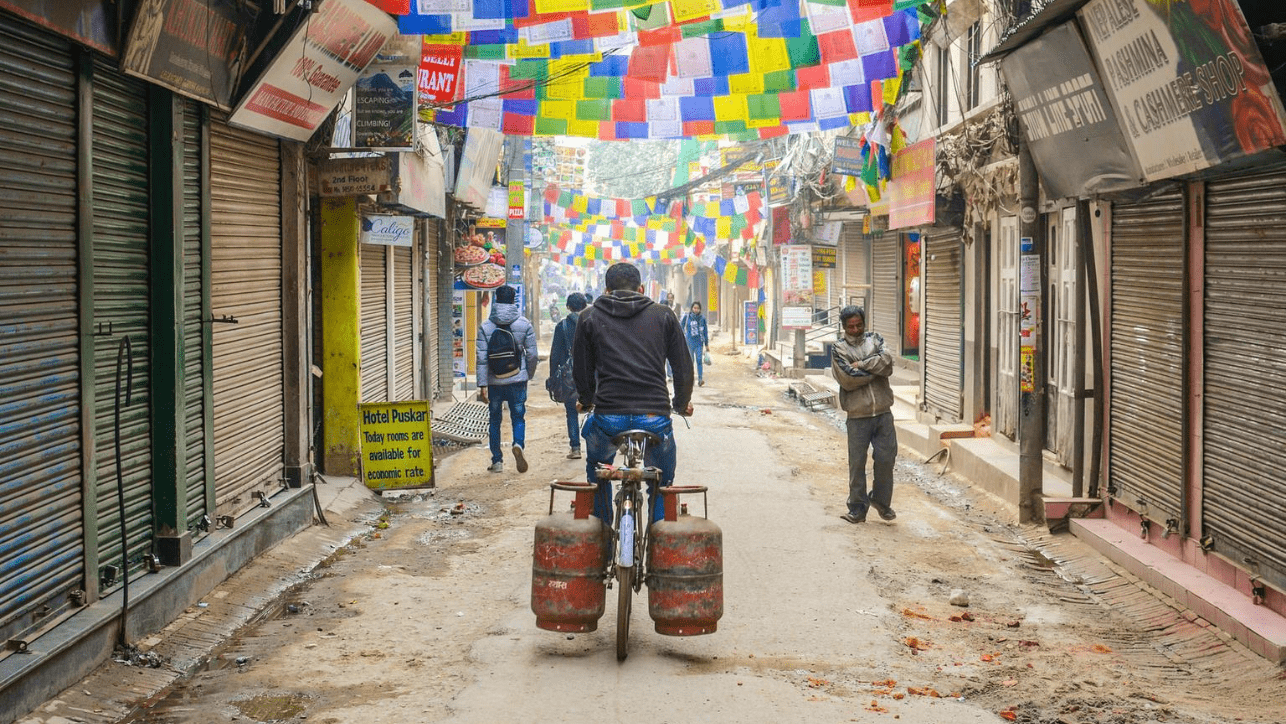Here we are, again!
The government decided to implement a 7-day restriction in the Kathmandu valley and other parts of the country starting 19 August 2020, midnight. After a week, the restriction has been extended to yet another 7 days.
Although the restriction is not a complete lockdown as it was 5 months ago, it is not very different. Still, we can call it Lockdown 2.0.
Coronavirus in Nepal
People are staying at home just like before. The number of COVID-19 cases in Nepal is rising day-after-day. The condition is worse. A few months ago, there was not a single new case in the Kathmandu valley. Now, it records the highest number of cases every day. As of writing this post, the country has recorded a total of 36,456 cases among which 16,019 are infected, 20,242 have recovered, and 195 have died.
I’m sure that most of us are a bit confused about the whole situation in the country. We don’t know what to do and what not to do. Many of us are scared while some of us are chilled about the situation. Rumors and fake news on social media are not helping. I’ve heard many rumors about the coronavirus infections. People tell me things like wearing a mask for too long is not good, masks like KN95 should be avoided because they impact our breathing, and I’ve even heard that the coronavirus entirely is fake.
Situation In Wuhan, China
China’s Wuhan, where the virus was first seen, is now free from it. The city was in lockdown for almost 3 months from January 23 to April 8, while the rest of the world was just hearing news about the virus. Other countries were not worried about the virus back then because they had never imagined that it would spread so quickly in so many places. Wuhan lifted its lockdown officially on April 8 once the situation became under control. Slowly, the city began to re-open and today, it is completely back to normal. People have even started partying at pools.

How did Wuhan manage to get the situation under control? Apparently, the city had first planned to test everyone in 10 days. In a city with a population of 11 million, they managed to test 9.9 million people, but not in 10 days. Still, that is a huge achievement.
Lockdown 2.0
The officials in Nepal had first decided to lock down the entire country on March 24, 2020. Back then, there were only a few cases in the country. New cases were seldom discovered. The lockdown was considered as “meaningless” by most people. The youth even came to the streets to protest against the lockdown, demanding for quality testing instead.
The initial lockdown did somehow prevent people from getting infected from the virus as they were not allowed to socialize. However, the major concern was poverty. People were worried about dying from hunger instead of the virus. The lockdown had happened without any preparation or any pre-information to the public. People did not really have any time to prepare for the lockdown.
People lost their jobs. Laborers were forced to live on the streets. The virus was not taken under control as the testing quality was not improving. All these things brought frustration and anger in the people, which resulted in mass protests.
It is not easy to say what is right and what is wrong in these situations. This is a problem faced by almost the entire world. Even the big nations like the USA, UK, Italy, France, and Spain were unsure of how to handle the situation.
Let’s look at the data of COVID-19 in Nepal, as of 28 August 2020. (Source: Worldometer)




As we can see, the number of cases is increasing on a daily basis in the past few days, which is the reason the government has decided to announce restrictions in most parts of the country. But is lockdown the solution?
We’ve seen in the first lockdown that it did not really improve the situation. Yes, it did prevent people from getting in contact with other people. But what is the use of a lockdown if the number of cases increases every day? Restriction/Lockdown is only a temporary solution to a possible long-term problem. The solution is to increasing testing capacity to a large extent, just like Wuhan did. Also, people should take preventive measures by themselves, strictly following the WHO guidelines.
What to do Now?
Here we are yet again. The officials have declared a restriction in the valley and in most parts of the country, although some of us might still be going to work. Some districts are in a strict lockdown. Many of us might have learned a lot from the first lockdown about spending our time and doing things every day.
For me, the first lockdown was a lesson that helped me learned new things and how I spend most of my time. Although I was working from home, I did learn a lot of other stuff too. For instance, starting this blog was one of my achievements during the lockdown.
By now we must have understood that the lockdown is not a holiday. Even if we do consider it as a holiday, all we can do is stay home watching TV all day or sleeping. Instead, we need to take this time as an opportunity to learn, to improve ourselves, and to spend time with our loved ones.
The country is facing COVID-19 pandemic. In this time, instead of worrying about it, let’s focus on the positive aspects. Let us not allow it to affect our physical and mental health. Stay home, eat healthy, exercise, read, improve your skills, meditate, spend time with loved ones, learn something new, and talk to your friends (remotely). I often see people tensed about the whole situation. They watch some news or some fake post on social media about the virus and become worried. All they do is talk about the coronavirus. In some way, we have allowed it to mess with our heads.
I, like many of us, somehow knew that the lockdown 2.0 was coming sooner or later. So I had stayed prepared for it. For instance, I bought a bunch of books a few weeks ago because I missed reading new books during the previous lockdown. I had to re-read my old books. Now, I have a few new books in stock, which I will be reading in this lockdown.
Let us look into the bright side and hope for good things to happen in the country and in the world. The most important thing right now is to focus on our health and well-being. The numbers are rising day-after-day, especially in the Kathmandu valley. It is important to prevent ourselves now more than ever. Stay informed, stay home, stay safe!
Read More:




